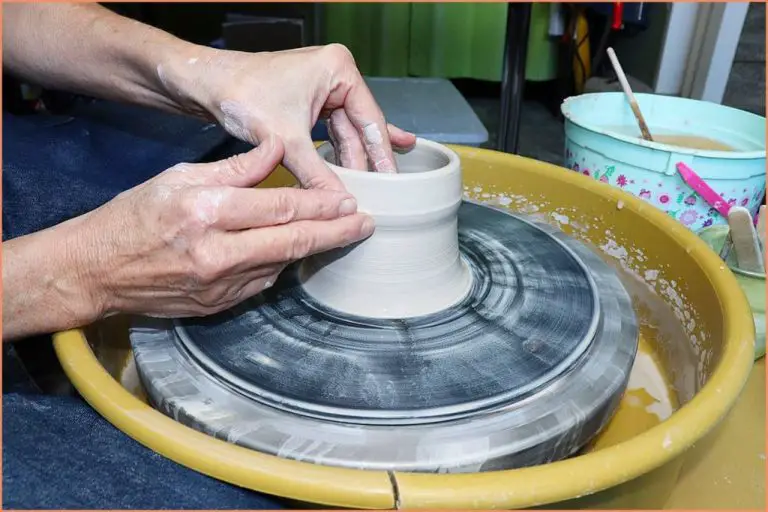What Are The Colors Of Roseville?
The city of Roseville, California has a rich history dating back to the 1860s when it was first established as a railroad town. According to the History of Roseville on the city’s official website, Roseville was incorporated in 1909 and continued to grow as a transportation and commerce hub over the decades.
As part of establishing its identity, Roseville adopted official city colors of blue and gold. Having official colors allows a city to create a cohesive visual brand and show civic pride. The blue likely represents stability, loyalty, and strength, while the gold symbolizes prosperity, optimism, and success.
The city of Roseville uses its official colors extensively on city seals, flags, website design, public signage, promotional materials, uniforms, and at civic events. The colors connect the community and promote an enduring spirit. Just as college sports teams and corporate brands have signature colors, cities like Roseville adopt hues that encapsulate their heritage and aspirations.
Roseville’s Primary Colors
The primary colors associated with Roseville Pottery are blue and gold. These two colors feature prominently across many of Roseville’s most popular lines and patterns.
The blue used in Roseville pottery has a rich, deep hue. It evokes feelings of trust, loyalty, wisdom, and confidence. Blue has long been associated with beauty and serenity. The origins of blue as a primary Roseville color may come from the company’s location along the Ohio River, which inspired tranquil blue watercolor designs.
The gold used in Roseville pottery is a warm, bright shade with hints of yellow. Gold communicates glory, wisdom, and prosperity. It has origins dating back to ancient Egypt, where gold held deep symbolic meaning. Roseville’s use of gold may be inspired by the Roaring Twenties, when golden accents and geometric shapes were hallmarks of Art Deco style.
Together, the blue and gold create a bold, complementary palette that came to define the Roseville brand. The colors bring richness and vibrancy to Roseville’s decorative ceramic wares.
Use of Blue and Gold
Blue and gold are two of the primary colors used throughout Roseville. These colors can be seen on many of the city’s flags, buildings, logos, and other municipal symbols.
The city flag features a horizontal triband of blue, gold, and blue. The gold center represents Roseville’s position as the heart of the Metro area, while the blue symbolizes the Mississippi River and other bodies of water in the region (Roseville Pottery Pattern).
Blue and gold are also the main colors of Roseville Area High School, whose logo consists of a stylized “R” in blue on a gold background. Students and fans wear these colors proudly at sporting events and school activities (Roseville Pottery).
Many city buildings like the fire stations and city hall also prominently display blue and gold accents. Overall these two colors create a unified civic identity that resonates throughout Roseville.
Roseville’s Secondary Colors
The secondary colors used in Roseville are red and white. In color theory, secondary colors are created by mixing two primary colors together. Red is made by mixing blue and yellow, while white is made by mixing all primary colors together. These secondary colors hold symbolic meaning in Roseville’s history and culture.
Red has long been associated with passion, energy, and drive. The use of red in Roseville often represents the vibrant spirit of community events and gatherings. Red brick buildings and red roses are common sights around the city. White represents purity, innocence, and new beginnings. Many white picket fences and white wedding gowns reflect these ideals. Together, red and white represent the liveliness and fresh starts that many have found in Roseville.
According to sources, residents take pride in the visual appeal that comes from mixing red and white with other bright colors. The combinations evoke feelings of nostalgia and small town charm. By honoring the history behind them, these classic secondary colors help make Roseville the unique place it is today.
Roseville’s Secondary Colors
An important part of Roseville’s color identity is its use of red and white as secondary, supporting colors. These colors are frequently seen in city symbols, events, and fixtures around Roseville.
For example, the city flag features a large red “R” set against a white background. The red represents the strength and passion of the community, while the white backdrop symbolizes purity and innocence (Color Palette | Pattern Library | UMN).
Many city facilities also utilize red and white for a bold, classic look. The Roseville Library features red brick exterior walls and white window trimming. The Roseville Skating Center has white walls inside with red accents. Several city parks contain play equipment or signage in red and white.
During Rosefest, one of the city’s major annual summer events, red and white are heavily featured. Attendees wear custom Rosefest shirts and hats in red with white logos. The carnival midway is filled with red ticket booths, white tents, and rides with red and white color schemes. Overall, the red energizes the atmosphere while the white provides an elegant accent.
The use of red and white allows Roseville to create visual cohesion across civic locations, materials, and activities. The colors embed deeply into the experiences and memories of residents. Red and white will continue serving as an identifiable palette for Roseville into the future.
Psychology of the Colors
The colors used in Roseville’s branding and marketing materials evoke certain psychological responses and imply deeper meanings. According to research, colors can elicit emotional reactions and influence our perceptions (https://www.ncbi.nlm.nih.gov/pmc/articles/PMC4311615/). The use of blue and gold as Roseville’s primary colors provides a sense of trust, stability, wisdom, and confidence.
Blue is known to have a calming and relaxing effect. It evokes feelings of peace, tranquility, and openness. Blue is also associated with depth, expertise, and stability. The use of blue in Roseville’s branding implies that the city offers a soothing, welcoming, and trustworthy environment. Gold is associated with success, achievement, luxury, quality, and prosperity. It evokes feelings of optimism and confidence. Together, blue and gold present an image of Roseville as a prosperous, high-quality, and forward-looking city (https://www.verywellmind.com/color-psychology-2795824).

The secondary colors of red and white also carry symbolic meanings. Red is stimulating and draws attention. It implies vibrance, passion, and excitement. White represents purity, innocence, and space. Together with blue and gold, these secondary colors present a well-rounded image for Roseville.
By thoughtfully combining these colors, Roseville establishes a distinctive brand identity that resonates emotionally with target audiences. The psychology behind the color choices reinforces the desired perceptions of the city.
Complementary Colors
Complementary colors are color pairs that are opposite each other on the color wheel. For Roseville’s colors, the complements are:
- Blue and orange
- Gold and purple
- Red and green
- White and black
These complementary pairs create a strong visual contrast when placed next to each other in a design. Complementary colors also bring out the intensity of one another. The bright blue pops against a pumpkin orange, just as a true red looks richer next to leafy green ( https://nadinestay.com/how-to-pick-a-color-palette-part-1-complimentary-colors/ ).
Other colors that complement Roseville’s main palette include:
- Soft pinks and mauves to accent the blue
- Deep plums and wines to contrast with the gold
- Forest greens and olive tones to pair with the red
- Grays and silvers to complement the white
Thoughtfully choosing complementary hues allows designers to expand Roseville’s iconic palette in eye-catching ways. The contrast creates visual interest and vibrancy in any design.
Color Palettes
Roseville art pottery is known for its beautifully coordinated color palettes using the primary colors blue and gold with the secondary colors red and white. The interplay between these colors creates visually striking designs.
Some popular color combinations include:
- Blue and gold – These complementary colors create high-contrast, vibrant palettes full of energy. The warmth of the gold balances the cool tone of the blue.
- Blue, red, and gold – Adding red as an accent color punctuates the blue and gold with moments of brightness. This triad palette has depth and visual interest.
- Blue, white, and gold – Soft blue tones alongside bright white and gold make for an elegant, sophisticated look. The white lightens up the other colors.
- Red, white, blue, and gold – Using all four brand colors together unifies the palette with a recognizable Roseville identity. The red and blue contrast while the white and gold tie it together.
No matter the exact combination, Roseville designers expertly blended these signature colors to produce unified palettes and stunning glazes that have stood the test of time.
Tying It All Together
Roseville’s colors allow the city to stand out and create a unique identity through colorful yet coordinated branding. The blue and gold primary colors represent stability, trust, and wisdom. As Roseville’s prominent government colors established early on in the city’s history, blue and gold communicate tradition, order, and strength. The red and white secondary colors create a vibrant contrast, evoking energy, passion, and joy while projecting a clean and pure image.
Together, these four colors form complementary pairings that strike the right psychological balance for an appealing and memorable city palette. Thoughtfully combining shades of blue, gold, red, and white allows Roseville to seem approachable yet professional, dynamic yet disciplined. The colors resonate on a human level while promoting civic pride and community connection. Roseville’s bold, thoughtful use of color helps create an uplifting urban landscape that reflects the city’s unique identity and spirit.
Looking Ahead
The colors of Roseville will likely continue to evolve and take on new meanings in the future. As the city grows and changes, the civic pride associated with the traditional blue and gold may expand to encompass new hues. Vibrant colors like red and white will likely grow in popularity as new businesses, construction projects, and community events shape Roseville’s identity.
The blue and gold will remain anchors of the city’s visual identity, speaking to heritage and tradition. However, warmer metallic tones like rose gold may start to complement the cooler blue, reflecting developing trends. Softer pastel variants of the main colors may also emerge as part of color palettes for new neighborhoods and shopping centers, like Future Ford of Roseville‘s recent slate gray and light blue facade.
While red and white will continue to signify energy, excitement and civic pride, calmer tones like burgundy may someday distinguish historic districts. And the psychological effects of different color combinations will impact design choices for gathering spaces intended to energize, relax or inspire. Looking ahead, Roseville’s colors will evolve with the community while still celebrating its foundations.





